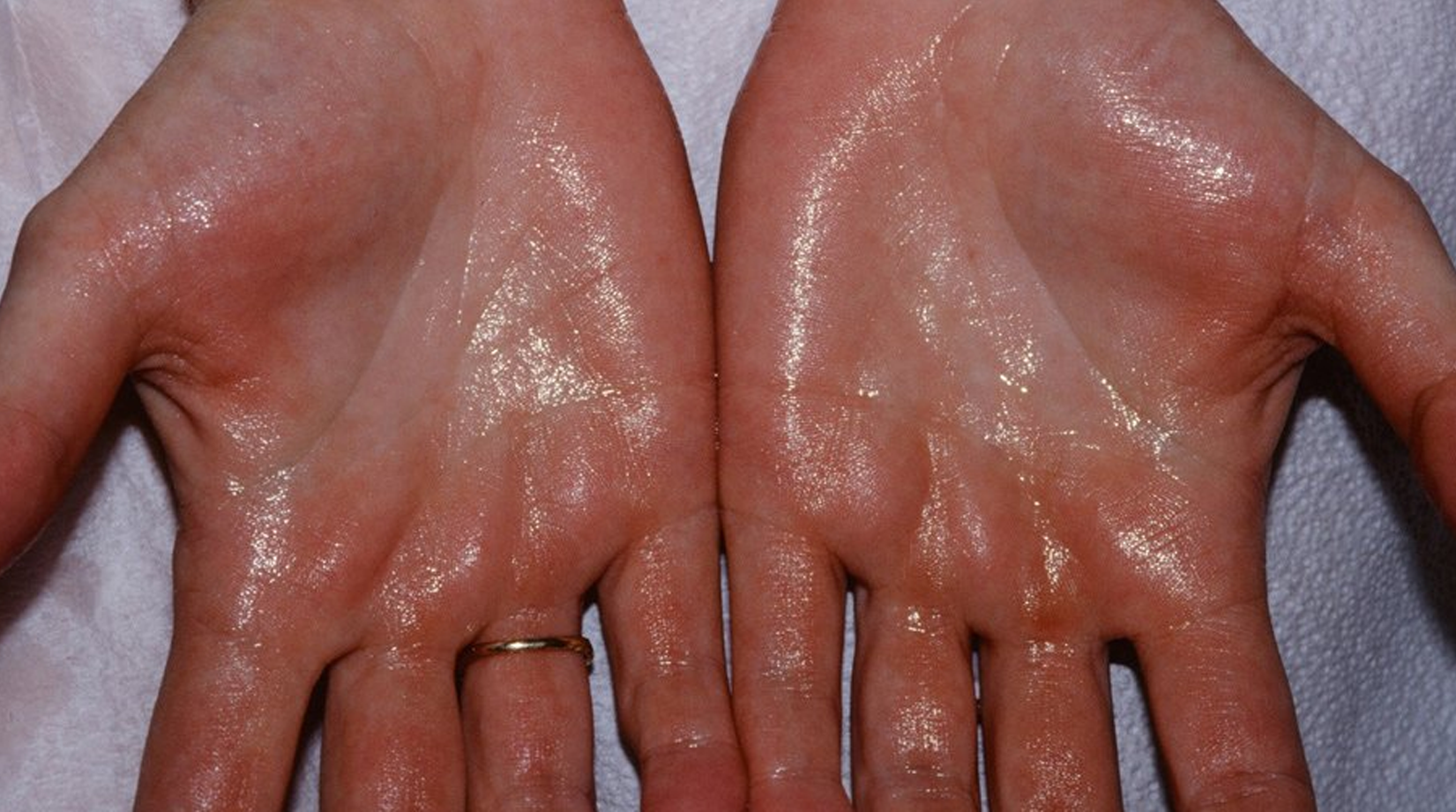
What is it?
Hyperhidrosis, also known as polyhidrosis or sudorrhea, is a medical condition where a person sweats excessively and unpredictably. Hyperhidrosis patients sweat even when it is cool and even when they are resting.
Causes
- Excessive sweating can occur for no obvious reason.
- It could also occur from another pre-existing medical condition.
- Some patients suffer from excessive sweating due to a side effect of the medication they are consuming.
Symptoms
- Clammy or wet palms of the hands
- Clammy or wet soles of the feet
- Frequent sweating
- Noticeable sweating that soaks through clothing
Types of Hyperhydrosis
Hyperhydrosis can occur in various forms, including,
- Primary or Focal Hyperhidrosis: When excessive sweating affects the hands, feet, and armpits.
- Secondary Hyperhidrosis: If the sweating occurs as a result of another medical condition, including, Anxiety conditions, Cancer, Glucose control disorders, Heart diseases, Overactive thyroid, Lung disease, Menopause, Parkinson disease, Pheochromocytoma (adrenal gland tumor), Stroke, Tuberculosis or other infections.
Treatment
Some of the treatment options known for Hyperhydrosis are:
- Antiperspirants: Excessive sweating may be controlled with strong antiperspirants, which plug the sweat ducts. They can cause skin irritation, and large doses of aluminum chloride can also damage clothing.
- Medicines: may help prevent stimulation of sweat glands. They are usually prescribed for certain types of hyperhidrosis such as excessive sweating of the face. They might have side effects.
- Iontophoresis: uses electricity to temporarily turn off the sweat gland and is effective for sweating of the hands and feet. The doctors place the patient’s hands or feet in water and a gentle current of electricity is passed through it. The electricity dosage is gradually increased until the person feels a light tingling sensation.
- Botox: is used to treat severe underarm, palmar, and plantar sweating. It is injected into the underarm to temporarily block the nerves that stimulate sweating. Side effects include injection-site pain and flu-like symptoms.
- Endoscopic thoracic sympathectomy (ETS): is usually performed for severe cases. It is a minimally invasive surgical procedure where the doctor cuts a nerve, turning off the signal that tells the body to sweat excessively.
Underarm surgery: removes the sweat glands in the armpits employing methods like laser, curettage (scraping), excision (cutting), or liposuction.


